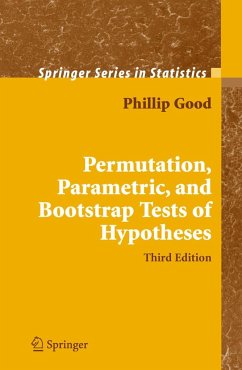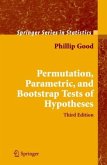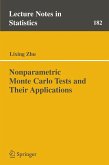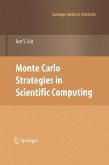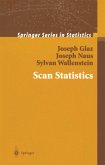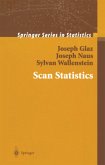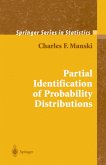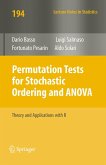Previous edition sold over 1400 copies worldwide.
This new edition includes many more real-world illustrations from biology, business, clinical trials, economics, geology, law, medicine, social science and engineering along with twice the number of exercises.
This text is intended to provide a strong theoretical background in testing hypotheses and decision theory for those who will be practicing in the real worldorwhowillbeparticipatinginthetrainingofreal-worldstatisticiansand biostatisticians. In previous editions of this text, my rhetoric was somewhat tentative. I was saying, in e?ect, "Gee guys, permutation methods provide a practical real-world alternative to asymptotic parametric approximations. Why not give them a try?" But today, the theory, the software, and the hardware have come together. Distribution-free permutation procedures are the primary method for testing hypotheses. Parametric procedures and the bootstrap are to be reserved for the few situations in which they may be applicable. Four factors have forced this change: 1. Desire by workers in applied ?elds to use the most powerful statistic for their applications. Such workers may not be aware of the fundamental lemma of Neyman and Pearson, but they know that the statistic they wanttouse-acomplexscoreoraratioofscores,doesnothaveanalready well-tabulated distribution. 2. Pressure from regulatory agencies for the use of methods that yield exact signi?cance levels, not approximations. 3. A growing recognition that most real-world data are drawn from mixtures of populations. 4. A growing recognition that missing data is inevitable, balanced designs the exception. Thus, it seems natural that the theory of testing hypothesis and the more general decision theory in which it is embedded should be introduced via the permutation tests. On the other hand, certain relatively robust param- ric tests such as Student's t continue to play an essential role in statistical practice.
Hinweis: Dieser Artikel kann nur an eine deutsche Lieferadresse ausgeliefert werden.
This new edition includes many more real-world illustrations from biology, business, clinical trials, economics, geology, law, medicine, social science and engineering along with twice the number of exercises.
This text is intended to provide a strong theoretical background in testing hypotheses and decision theory for those who will be practicing in the real worldorwhowillbeparticipatinginthetrainingofreal-worldstatisticiansand biostatisticians. In previous editions of this text, my rhetoric was somewhat tentative. I was saying, in e?ect, "Gee guys, permutation methods provide a practical real-world alternative to asymptotic parametric approximations. Why not give them a try?" But today, the theory, the software, and the hardware have come together. Distribution-free permutation procedures are the primary method for testing hypotheses. Parametric procedures and the bootstrap are to be reserved for the few situations in which they may be applicable. Four factors have forced this change: 1. Desire by workers in applied ?elds to use the most powerful statistic for their applications. Such workers may not be aware of the fundamental lemma of Neyman and Pearson, but they know that the statistic they wanttouse-acomplexscoreoraratioofscores,doesnothaveanalready well-tabulated distribution. 2. Pressure from regulatory agencies for the use of methods that yield exact signi?cance levels, not approximations. 3. A growing recognition that most real-world data are drawn from mixtures of populations. 4. A growing recognition that missing data is inevitable, balanced designs the exception. Thus, it seems natural that the theory of testing hypothesis and the more general decision theory in which it is embedded should be introduced via the permutation tests. On the other hand, certain relatively robust param- ric tests such as Student's t continue to play an essential role in statistical practice.
Hinweis: Dieser Artikel kann nur an eine deutsche Lieferadresse ausgeliefert werden.
From a review of the first edition:
"Permutation Tests is a welcome addition to the literature on this subject and will prove a valuable guide for practitioners...This book has already become an important addition to my reference library. Those interested in permutation tests and its applications will enjoy reading it." Journal of the American Statistical Association
Review of the third edition:
"The book has been considerably reorganized and extensively rewritten from the 1E and the second edition...Although it is larger by only 30 pages, it is still a much different book." Technometrics, November 2005
"Permutation Tests is a welcome addition to the literature on this subject and will prove a valuable guide for practitioners...This book has already become an important addition to my reference library. Those interested in permutation tests and its applications will enjoy reading it." Journal of the American Statistical Association
Review of the third edition:
"The book has been considerably reorganized and extensively rewritten from the 1E and the second edition...Although it is larger by only 30 pages, it is still a much different book." Technometrics, November 2005
From the reviews of the third edition: "All told, Permutation, Parametric, and Bootstrap Tests of Hypotheses garners high marks for its scope and clarity. Graduate students will appreciate its rigorous treatment of diverse topics and ample exercises to reinforce ideas...this text deserves a place in any scientific library." Journal of the American Statistical Association, December 2005 "The book provides a good overview of hypotheses testing and decision theory. ... The book is well-written, concise and clearly organized. Many examples and figures illustrate the text. Each chapter is concluded by numerous exercises ... to make the fundamental concepts more comprehensive. ... My overall impression of the book is very positive. ... the book is a valuable supplement to the existing literature and can be recommended to both practitioners and researchers in statistics." (Bernd Droge, Metrika, Vol. 64, 2006) "This is the third edition of a well known and respected book by Good. ... provides a very good overview on decision theory and hypothesis testing. It is well written and does cover permutation, parametric and bootstrap techniques very effectively. I would recommend this book for the statisticians as well as biostatisticians to practice the methodologies provided in this book. This book will be of interest to graduate students in statistics and biostatistics. In addition, this book would be a valuable asset for the library." (B. M. Golam Kibria, Statistical Papers, Vol. 47, 2006) "Although this third edition has only 45 more pages ... the change in title suggests a change in focus from mainly dealing with permutation tests to put equal weight on parametric and bootstrap tests of hypotheses. ... It would be excellent as a supplemental text on testing hypotheses and decision theory ... . it is excellent for those who want to learn about or to apply permutation methods ... . It also has a good general overview of hypotheses testing and decision theory." (Andreas Karlsson, Journal of the Royal Statistical Society, Vol. 169 (1), 2006) "This is the third edition of a well known and highly praised book. ... It ... also includes material on parametric and bootstrap tests but permutation tests take the centerstage. This revised edition has been enlarged by about 25 pages. ... The number of exercises has been greatly increased. More interestingly, some of the essential results have now been given in the form of exercises." (Arup Bose, Sankhya, Vol. 67 (1), 2005) "From the start of the journey into testing hypotheses ... the book refers to the author's personal experience. ... This is supposed to benefit the students, instructors and autodidacts ... . the book is intended for a two-semester graduate course on hypotheses testing and decision theory. ... to the best of judgment, it is a very interesting, profound, modern and useful book." (Gaj Vidmar, ISCB News, Vol. 144 (2), 2007) "In this book the author explores the use of computational methods for hypothesis testing, and he describes the great advantages that make these methods the most powerful tools among statistical procedures. ... The book is clear, readable and very well focused ... . This is a book for graduate students and scientists. Practitioners can also take great advantage of it ... . In my view, this book should be present in all statistics departments and university libraries." (Ana F. Militino, Journal of Applied Statistics, Vol. 34 (10), 2007) "This book is the third edition of an evolving text that aims to provide a theoretical background on both parametric and resampling tests. It combines and compares these two approaches in a comprehensive manner, constituting a graduate-level text appropriate for researchers and practitioners. ... the book is recommended to researchers who use advanced statistical tests, especially those having to work with uncommon and problematic data ... ." (Lefteris Angelis, ACM Computing Reviews, Vol. 49 (5), 2008)

